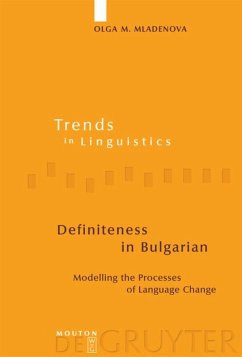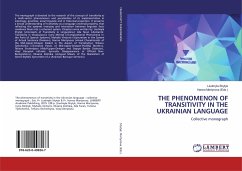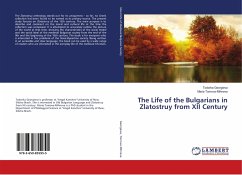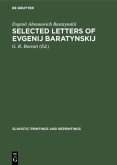In its evolution from a synthetic to an analytic language, Bulgarian acquired a grammaticalized category of definiteness. The book presents the first attempt to explore in detail how this happened by comparing the earliest Modern Bulgarian texts with contemporary dialect and standard Bulgarian data. The basic units of analysis are the various types of nominal structures headed by nouns or pronouns. The analysis requires the strict terminological disentanglement of form from content and the adoption of a default inheritance model of definiteness that allow the exhaustive classification and tagging of nominal structures encountered in the texts. Tagging makes it possible to apply quantitative analysis to nominal structure and to assess the types available in the early texts from a current native-speaker perspective.
Based on an S-curve model of language change, the study establishes that overt markers of definiteness were first made available to identifiability-based definites, then to inclusiveness-based definites, quantitative generics and unique referents. The overt markers of indefiniteness followed suit, separating indefinites from non-specifics and typifying generics. This progression of definiteness was directed by variables such as person, animacy, gender, number and noun-class, and started in contexts in which definiteness closely interacted with possessivity. Such an analysis leads to the realization that the two-dimensional S-curve model does not account for all language change and that there is a need for a three-dimensional model. It also demonstrates that, contrary to previous assumptions, there is continuity between the early Slavic marker of definiteness (long-form adjectives) and the Modern Bulgarian article. This discovery, in conjunction with geolinguistic arguments, sheds new light on the role that relations inside the Balkan Sprachbund played in the grammaticalization of Bulgarian definiteness.
Hinweis: Dieser Artikel kann nur an eine deutsche Lieferadresse ausgeliefert werden.
Based on an S-curve model of language change, the study establishes that overt markers of definiteness were first made available to identifiability-based definites, then to inclusiveness-based definites, quantitative generics and unique referents. The overt markers of indefiniteness followed suit, separating indefinites from non-specifics and typifying generics. This progression of definiteness was directed by variables such as person, animacy, gender, number and noun-class, and started in contexts in which definiteness closely interacted with possessivity. Such an analysis leads to the realization that the two-dimensional S-curve model does not account for all language change and that there is a need for a three-dimensional model. It also demonstrates that, contrary to previous assumptions, there is continuity between the early Slavic marker of definiteness (long-form adjectives) and the Modern Bulgarian article. This discovery, in conjunction with geolinguistic arguments, sheds new light on the role that relations inside the Balkan Sprachbund played in the grammaticalization of Bulgarian definiteness.
Hinweis: Dieser Artikel kann nur an eine deutsche Lieferadresse ausgeliefert werden.
"All in all, Mladenova's book is not only an important contribution to our understanding of definiteness, but also has broadened our horizons on the topic in general, and has given some important insights about the diachronic perspective as well as elucidated phenomena having been viewed as unrelated, namely, the lack of the definite article in the majority of Slavic languages and its preservation and re-building in the Balkan area."
Lilia Schuercks in: Slavic and East European Journal 53.1/2009
Lilia Schuercks in: Slavic and East European Journal 53.1/2009








